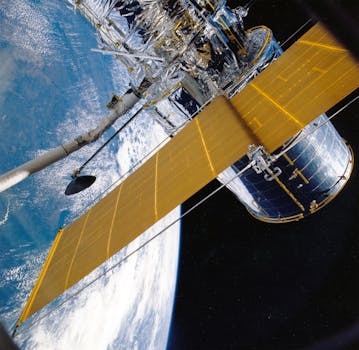GEO Satellites: Understanding the Technology and Applications of Geostationary Orbit Satellites

GEO Satellites: Introduction to Geostationary Orbit Satellites
GEO satellites, or geostationary orbit satellites, are a type of satellite that orbits the Earth at an altitude of approximately 36,000 kilometers above the equator. At this height, the satellite’s orbital period matches the Earth’s rotational period, allowing it to remain stationary relative to a fixed point on the Earth’s surface. This unique characteristic makes GEO satellites ideal for various applications, including telecommunications, weather forecasting, and navigation.
How GEO Satellites Work
GEO satellites work by transmitting and receiving signals to and from Earth-based stations. The satellite’s antenna receives signals from the Earth station, amplifies them, and then re-transmits them back to the Earth station. This process allows for continuous communication between two or more points on the Earth’s surface. The geostationary orbit also enables the satellite to maintain a fixed position in the sky, making it easier to track and communicate with.
Applications of GEO Satellites
GEO satellites have numerous applications in various fields. In telecommunications, they are used for broadcasting, mobile communications, and data transmission. Weather forecasting relies heavily on GEO satellites, which provide images of cloud patterns, sea surface temperatures, and other meteorological data. Navigation systems, such as GPS, also use GEO satellites to provide location information and timing signals.
Advantages and Limitations of GEO Satellites
GEO satellites have several advantages, including their ability to provide continuous coverage of a specific region, high signal strength, and relatively low latency. However, they also have some limitations. The high altitude of GEO satellites results in a significant delay in signal transmission, which can be a problem for real-time applications. Additionally, the geostationary orbit is becoming increasingly congested, leading to concerns about interference and satellite collisions.
Future Developments in GEO Satellites
Despite the limitations, GEO satellites continue to play a vital role in modern telecommunications and other fields. Researchers are working on developing new technologies to improve the performance and efficiency of GEO satellites. These include the use of advanced materials, more efficient propulsion systems, and improved antenna designs. The development of new applications, such as satellite-based internet services, is also driving innovation in the field of GEO satellites.